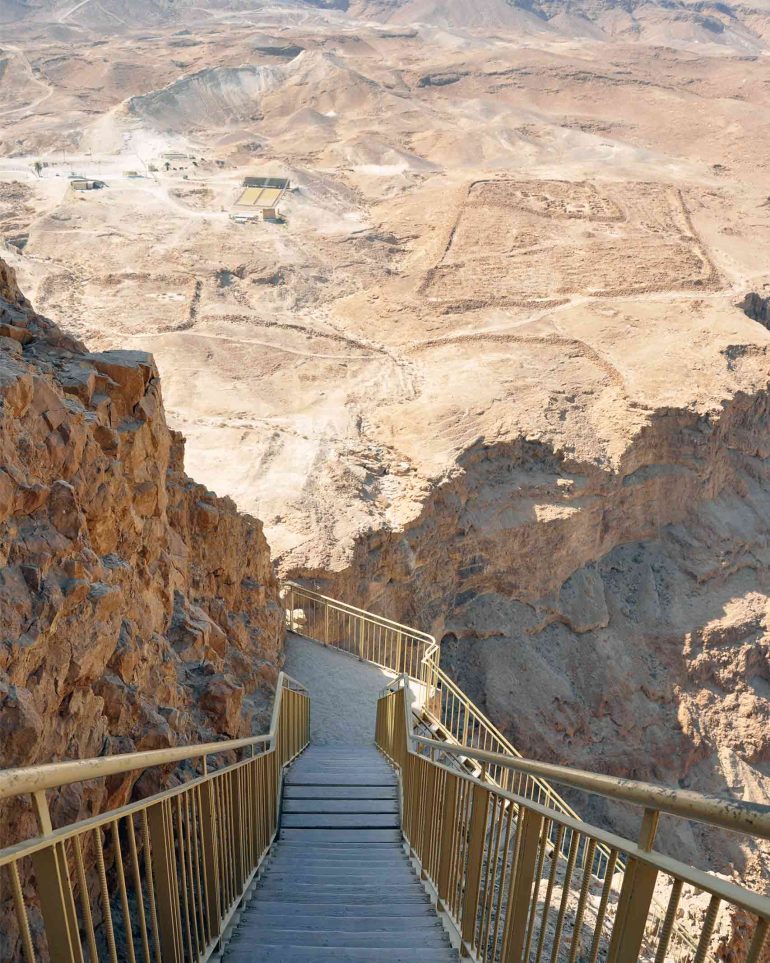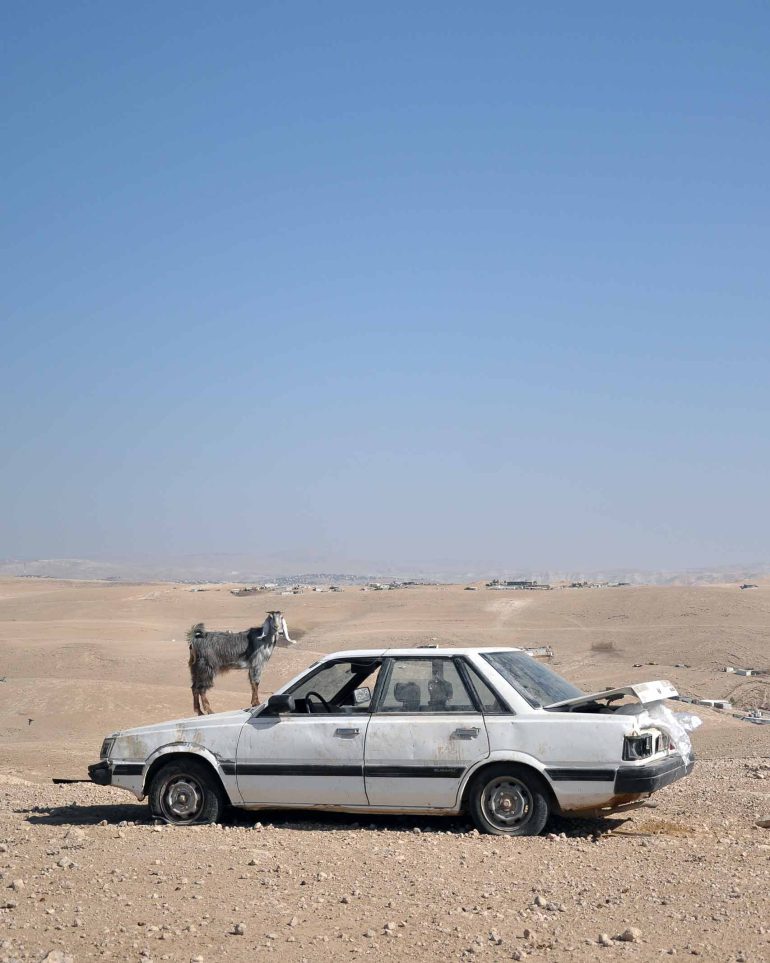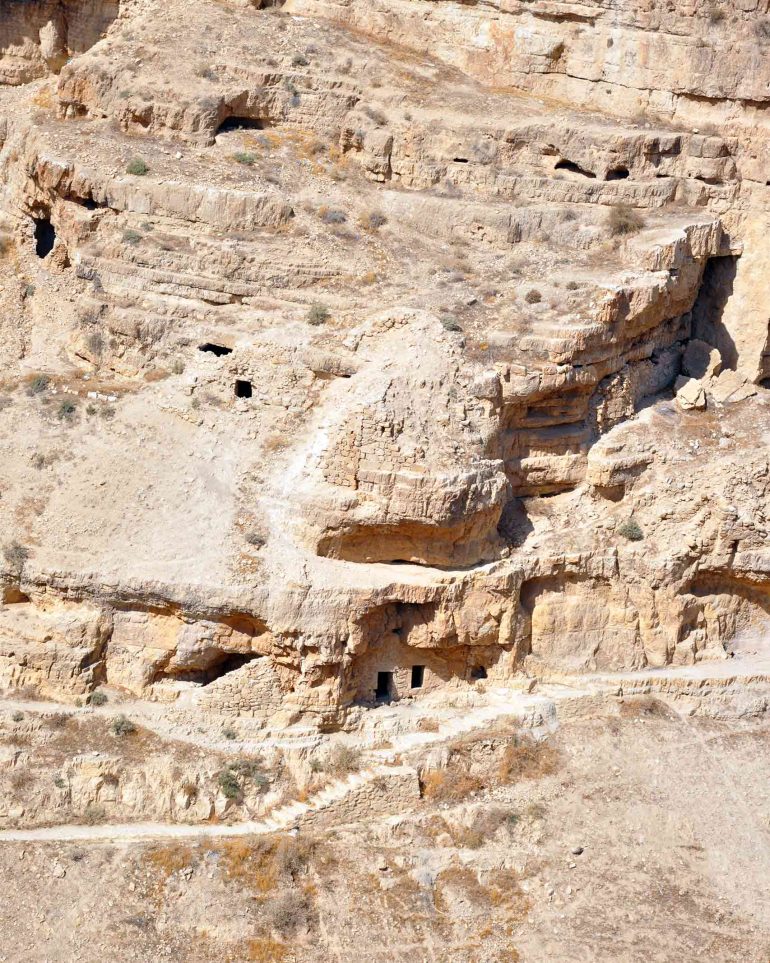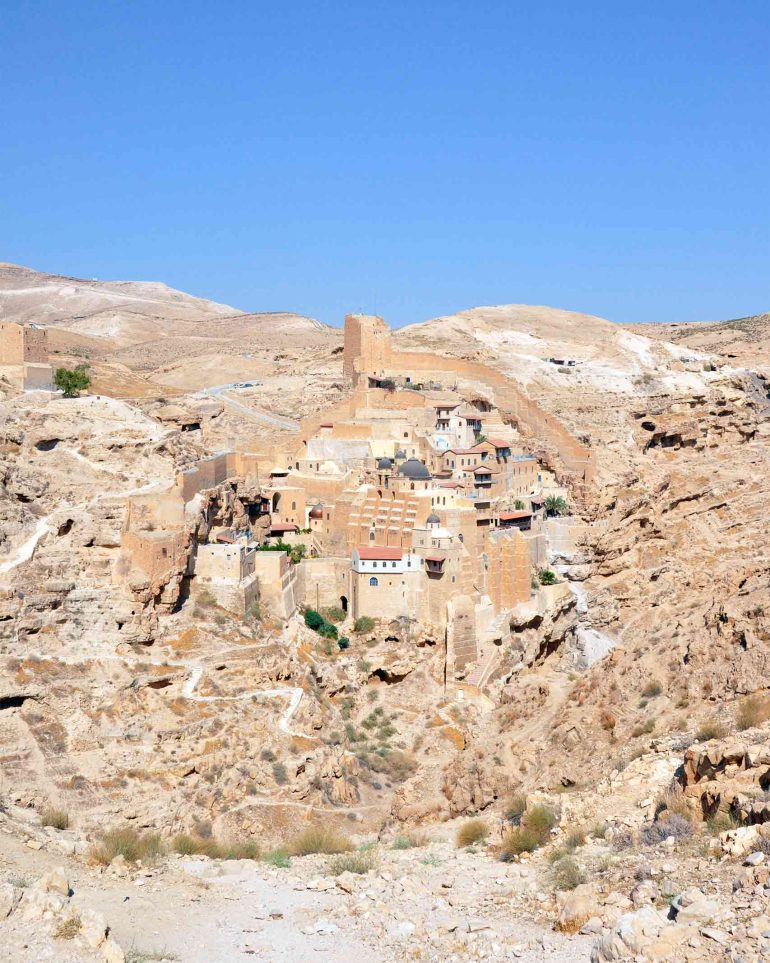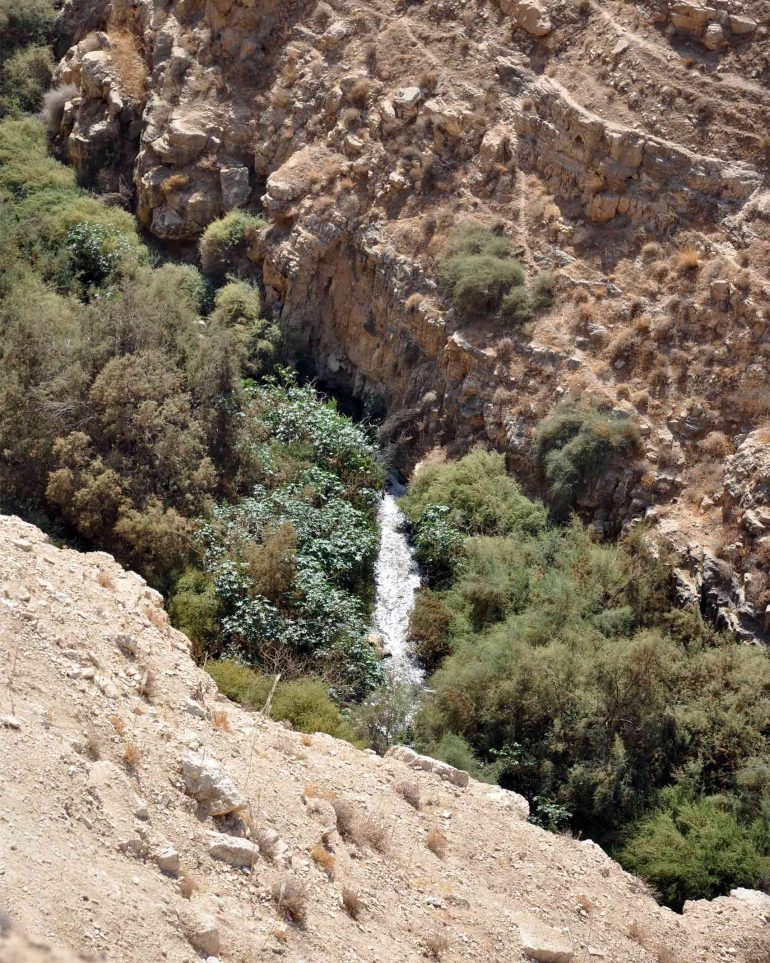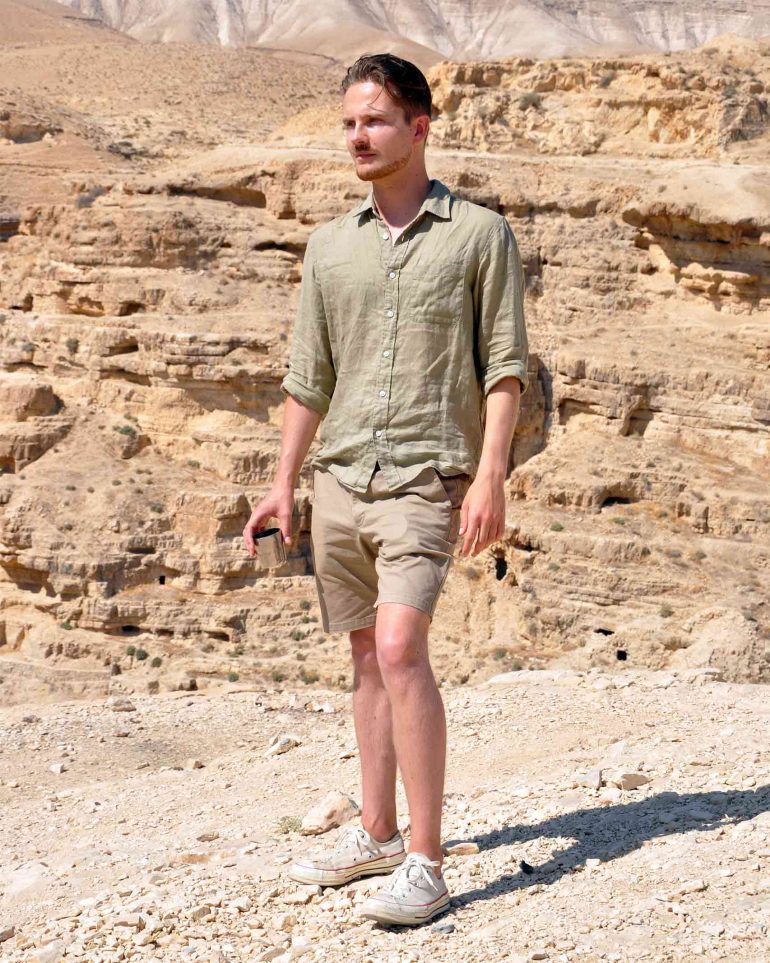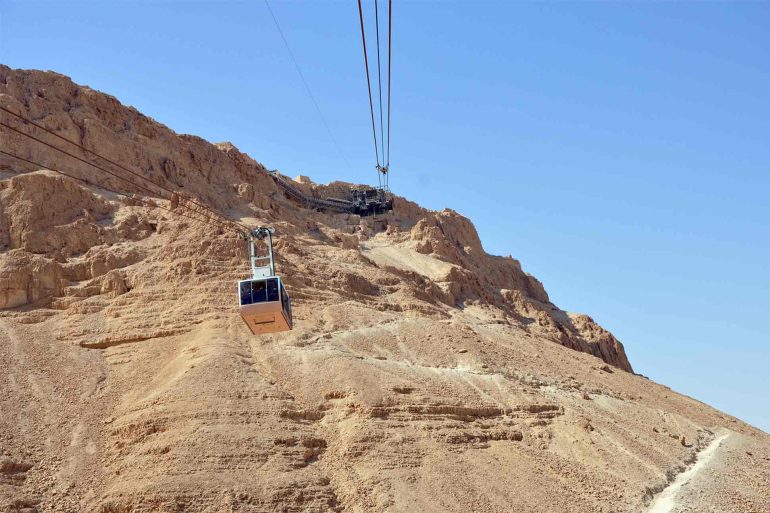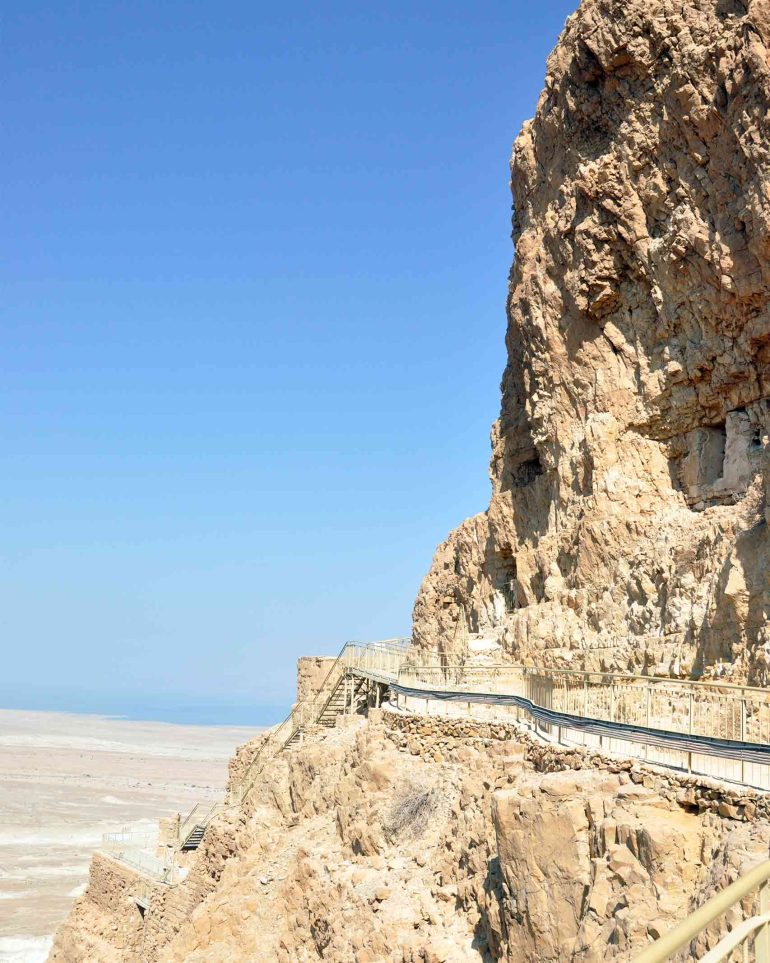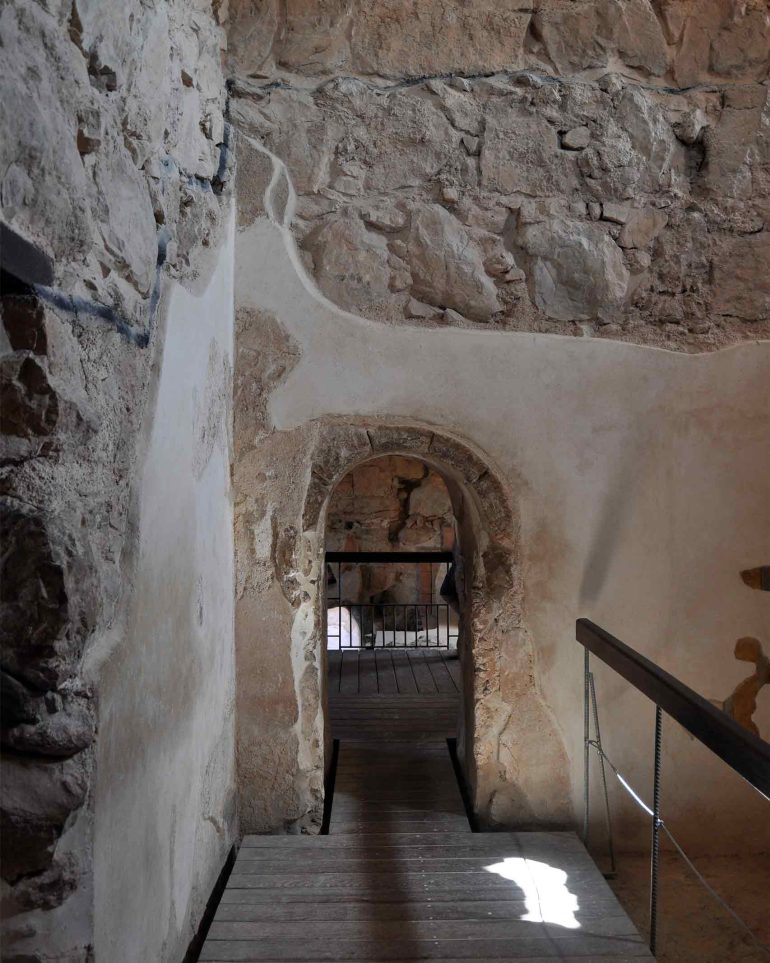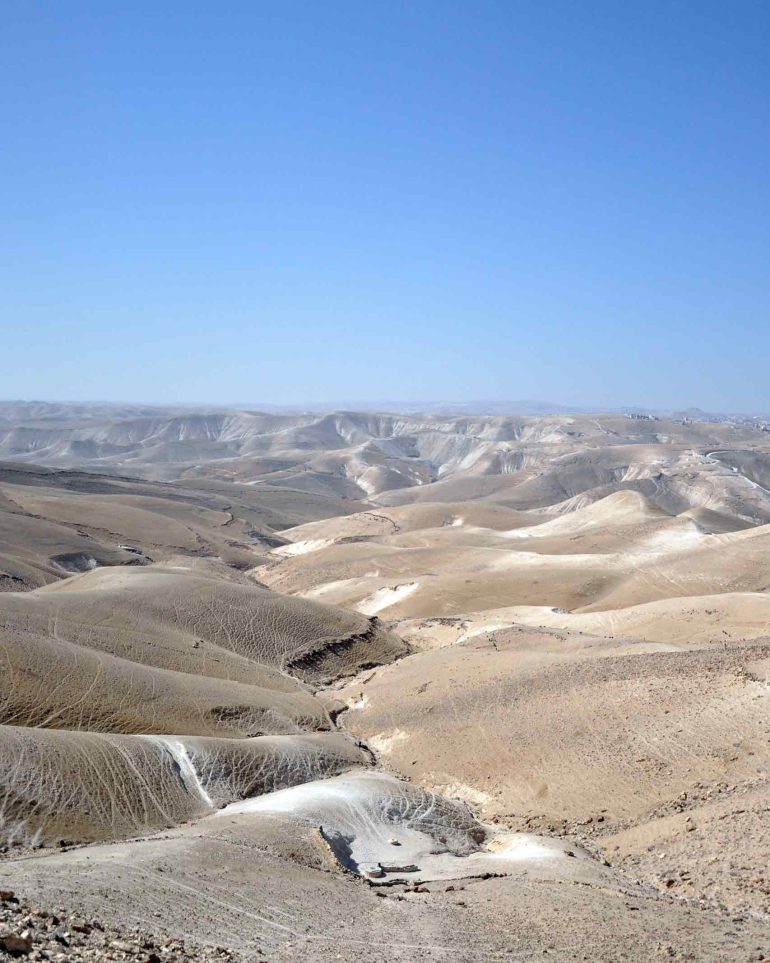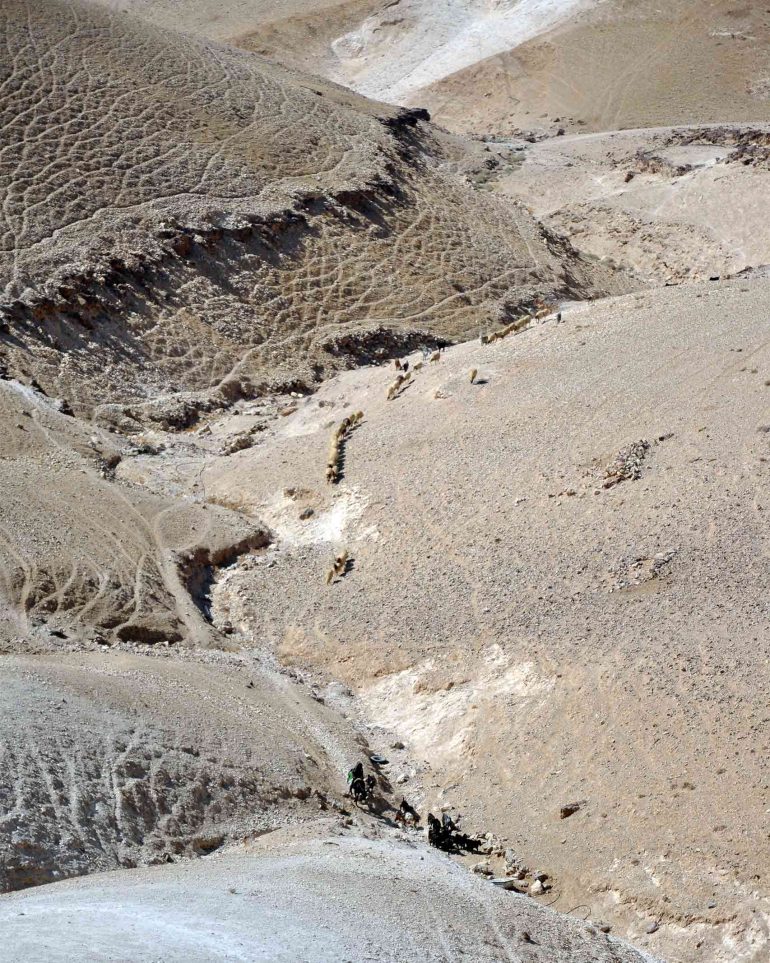Visitors to Israel would be foolish not to go on an excursion of the Judean Desert when staying in Jerusalem: not only because of the desert’s proximity but also because once you’ve arrived and the sand has settled, mirages of ancient history and former splendour appear seemingly out of nowhere.
Some fifteen minutes eastward from central Jerusalem by car, the Holy City suddenly disappears from view. Here, on the other side of the famous Mount of Olives, sun-baked pavements and densely populated neighbourhoods make way for the hilly terrain and hidden valleys of the Judean Desert. It’s a route that many a visitor in this part of Israel will take at one point or another, for what lies ahead is an assemblage of spellbinding sites whose very allure derives from their having weathered the ages.
One of these is Mar Saba monastery. Built into the gorge of the Kidron Valley, the tiered structure with small towers, domed buildings, high walls and steep stairs is all the more impressive thanks to its spectacular setting. But Mar Saba is more than an architectural marvel. Look in either direction of the compound and your eyes will fixate on black holes in the ravine. This network of caves, scattered across some 2km along the slope, is where 1,500 years ago, the first hermit monks arrived to live a solitary existence away from worldly distractions (and the occasional, treacherous apostle, we’d like to think).
Its survival throughout the centuries places the complex among the oldest near-continuously inhabited monasteries in the world, with twelve Greek Orthodox monks residing within the walls of Mar Saba to this day. Fascinating as it is, this place is often overlooked in favour of another site stretching even further into the past. To get there, we drive an hour or so south from Mar Saba. The oily Dead Sea, the lowest point on Earth and a highlight of any visit to Israel, shimmers like a Labradorite crystal on our left, while to our right, the Qumran Caves, where the Dead Sea Scrolls were discovered in 1946, lie in complete silence.
Masada is visible from the road long before you arrive. Built atop an enormous rock plateau, the ruins of Herod the Great’s palatial fortification are tinged in the glory of days gone by – but also in tragic. According to legend, some 967 Jewish zealots took their own lives here to escape enslavement by the Romans, who sieged the fortress in 74 AD. Excavations of skeletal remains don’t nearly add up to this number, though with local striped hyenas feeding on bones, it’s easy to see how those who die here would be swallowed whole by the Judean desert.
Just when you think that the region is a place defined by its past, however, you encounter its present. Bedouin communities still live here, and you’ll see their dwellings on the roadside. No longer nomadic, their lives are somewhere between cars and camels, mobile phones and water cisterns, Jerusalem and Judea. At times, all that divides a Bedouin village and a modern, Jewish settlement, are a hundred metres of barren desert. If there was a path between the two, it would span some 2,000 years of human history.
Luxury travel company Abercrombie & Kent can organise tailor-made trips across Israel with personalised VIP service.
Photography by Steffen Michels


